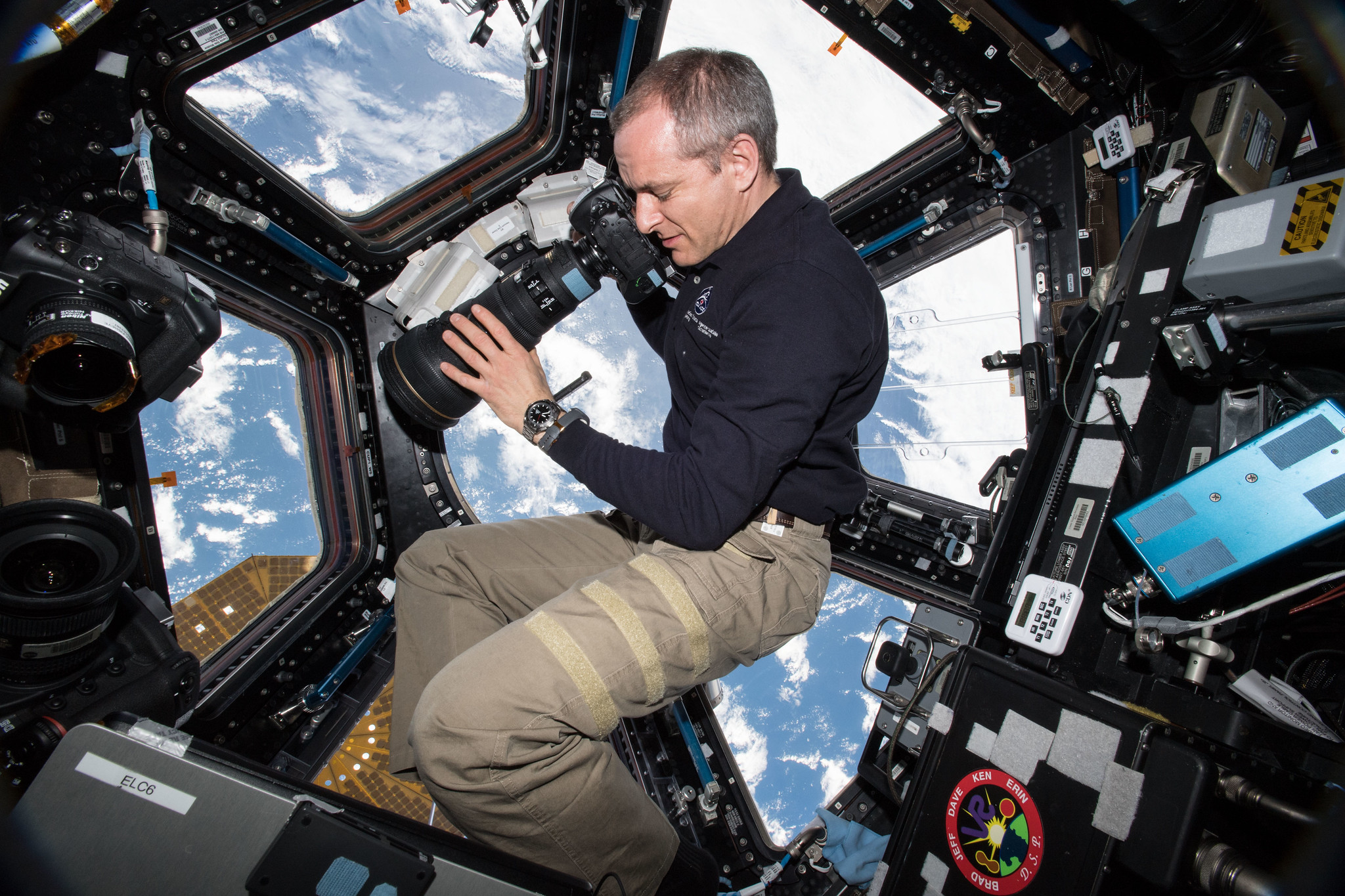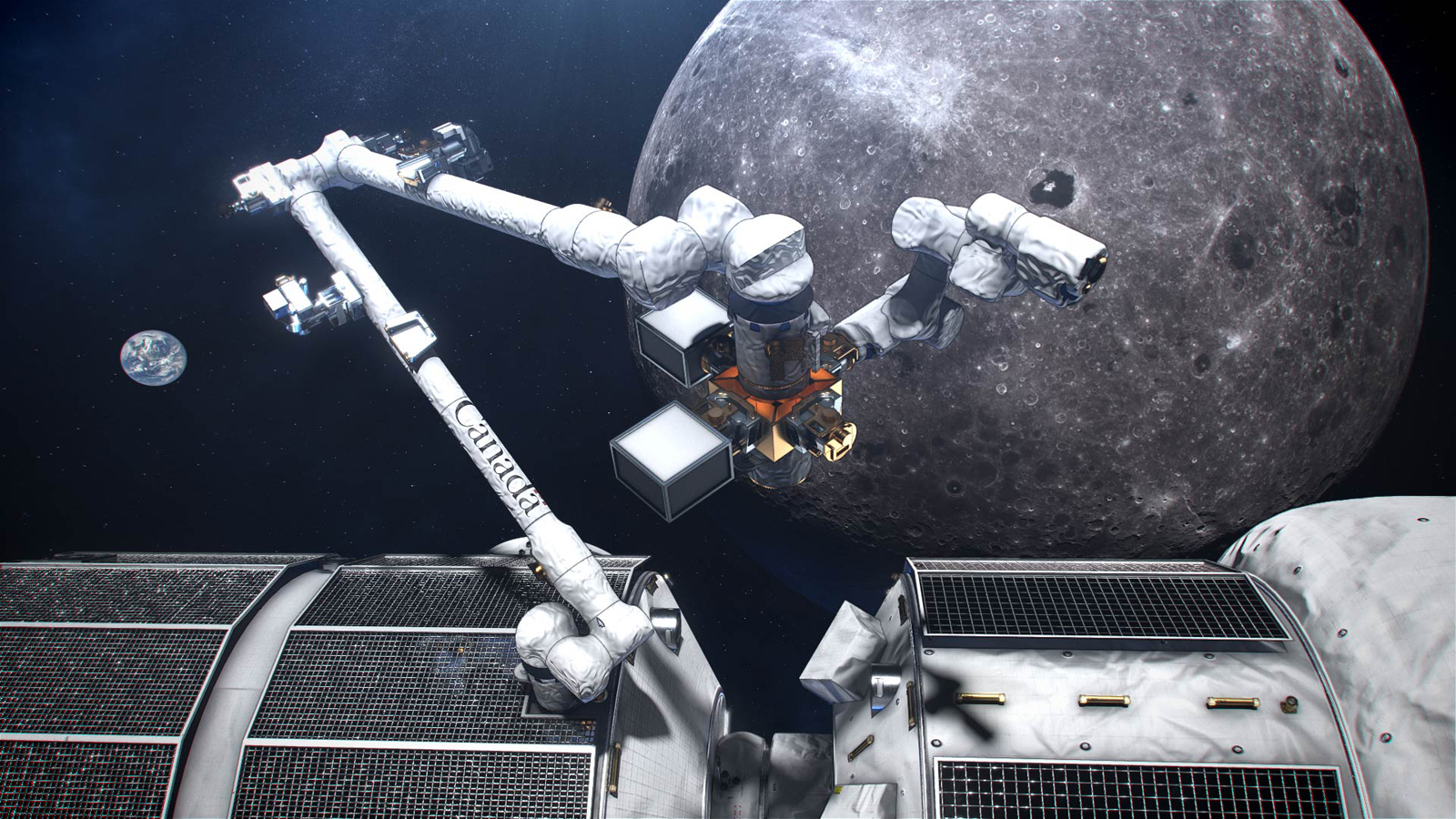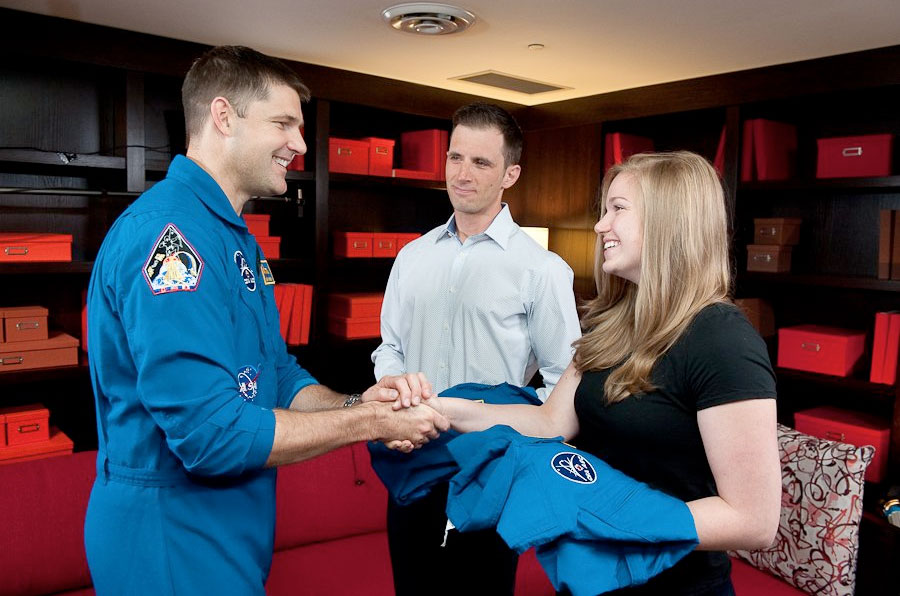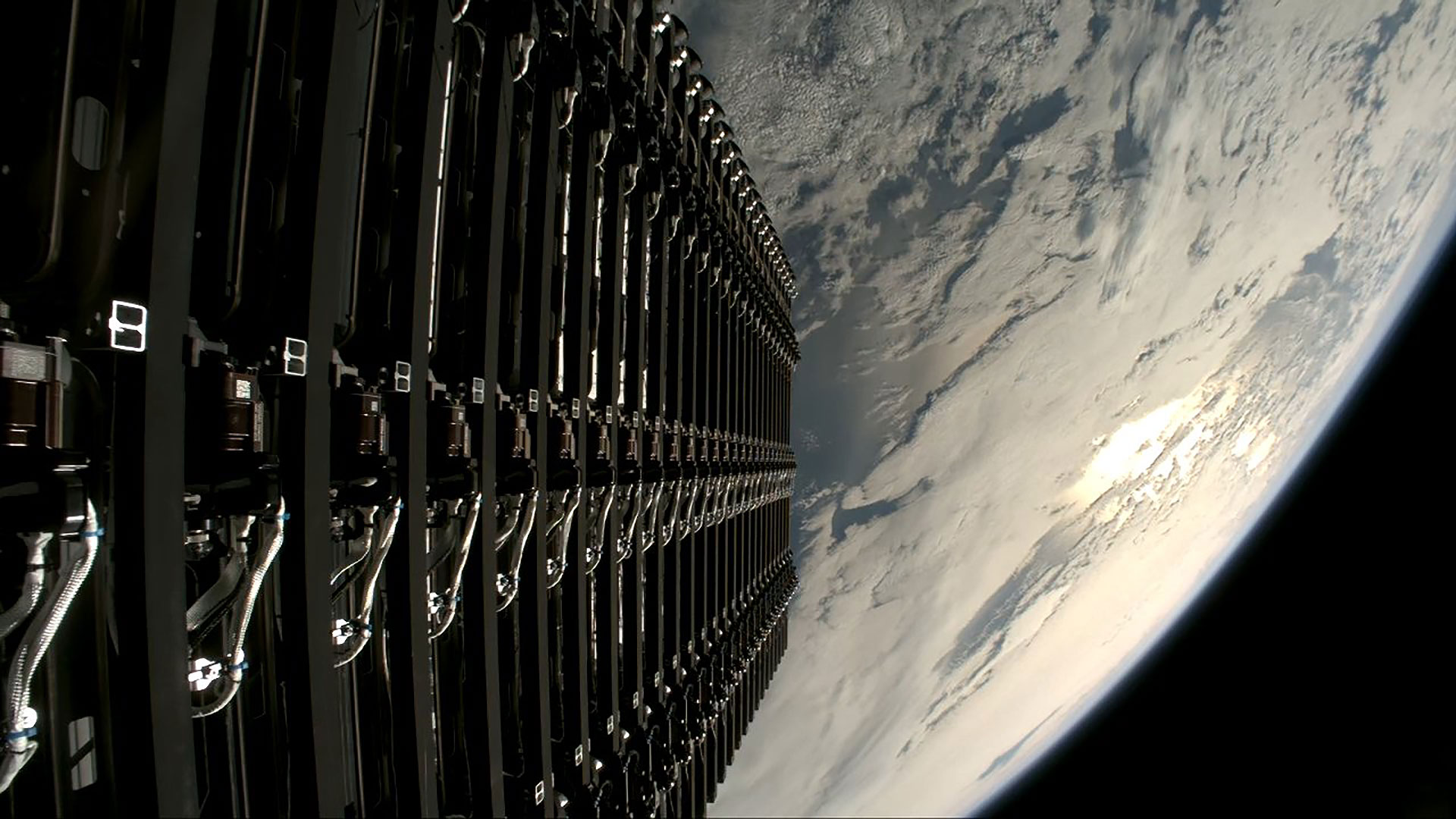Canadian astronauts will start flying to the moon in 2023 with NASA's Artemis missions

Canada plans to send two astronauts on moon-bound missions.
The Canadian Space Agency (CSA) announced Wednesday, Dec. 16, that a Canadian astronaut will fly around the moon in 2023 on the Artemis 2 mission — the first crewed mission of NASA's Artemis program — that will test NASA's Orion spacecraft in lunar orbit to prepare for a 2024 landing. A second CSA astronaut will participate in a subsequent mission to NASA's forthcoming Gateway space station in lunar orbit.
The forthcoming flight announcements are part of a larger memorandum of agreement between Canada and NASA, also announced Wednesday, formally pledging collaboration on the Artemis moon program that Canada said it would commit to nearly 18 months ago.
Related: Canadian Astronauts Talk Apollo 11 and Canada's Future in Space
Simply put, Canada will provide robotics to NASA, and in exchange NASA will give CSA astronauts opportunities to fly lunar missions, potentially even with more astronauts landing on the moon in the future, officials said in a virtual press conference.
"This will make Canada only the second country after the U.S. to have an astronaut in deep space … and send the first Canadian around the moon," Navdeep Bains, Canada's government minister of innovation, science and industry, told reporters in the press conference.
The only people who have ventured out of Earth orbit so far are a handful of American Apollo astronauts, over nine missions between 1968 and 1972, but NASA wants its Artemis program to include extensive international participation.
Breaking space news, the latest updates on rocket launches, skywatching events and more!
Canadian astronaut David Saint-Jacques evoked the historic Apollo 8 mission of 1968, which tested some of the major spacecraft systems in lunar orbit ahead of the first human landing in 1969, as the parallel for Artemis 2.
"It's a mission to test the [spacecraft] equipment and the navigation; as you can imagine, navigation from the planet will be one of the biggest challenges," Saint-Jacques said during the press conference (in French, translated into English). Another challenge the Artemis 2 astronauts will face is a high-speed re-entry in Earth's atmosphere, he added.
Canada will pay for its astronaut seats through its traditional route, which is providing handy space robotics to assist with NASA's missions. Canadarm3, a future robotic arm, will be mounted on the Gateway space station to do remote maintenance — even when astronauts aren't there.
Canadian robotics giant MDA — who also maintains Canadarm2 on the International Space Station — received a contract just last week to establish the technical requirements for Canadarm3, which CSA first pledged to contribute to the Artemis program in March 2019. The new arm will be equipped with artificial intelligence so that the robot has a measure of autonomy in performing scans of Gateway and possibly, assisting with repairs.
The moon-bound Canadian astronauts haven't been named yet, but Canada has a choice of four — Saint-Jacques (who flew to the International Space Station in 2018-19), Jeremy Hansen (selected in 2009 and still waiting for a mission), and newer 2017 recruits Jenni Sidey-Gibbons and Joshua Kutryk, who both qualified for full astronaut status earlier in 2020 after completing standard astronaut candidate training.
Notably, Hansen coordinated the entire 2017 astronaut class training schedule and acted as a mentor to the recruits, a first for a Canadian that shows NASA's confidence in Hansen's work. He also helped with the planning for several recent tricky spacewalks, including the complex procedures associated with repairing and upgrading a dark-matter detector on ISS known as the Alpha Magnetic Spectrometer.
During the press conference, Bains also said Hansen is a "tremendous ambassador" for Canada in promoting the country's space strategy to policy-makers. Hansen himself spoke to the importance of Canada's participation in international space missions, too.
"Setting big goals in space exploration — for example, the International Space Station — that has strengthened our ability to collaborate, and that same collaboration is required as we tackle big global challenges like climate change," Hansen said in the same press conference.
"Canada, in my opinion, just has so much to offer the global community … Space is changing rapidly. The commercial opportunities are immense. There are even new commercial opportunities now around human exploration, and even space robotics. What I would really love to communicate to our Canadian youth, minister, is that they should know our future in space is bright. We are leveraging decades of experience and commitment to the major players in this emerging economy. I think it is visionary."
"As Canadian astronauts, I think that we're particularly proud to be representing Canada in this context," Kutryk added during the same press conference. "We're also proud to have built here at the Canadian Space Agency our core of highly trained and ready professional astronauts, all of whom are ready for these missions and the ones that will follow."
Canada anticipates using its lunar opportunity to test out technologies such as rovers on the surface, and also to practice geology from orbit. Apollo astronauts historically received some of their geology training in Sudbury, Ont. and all current Canadian astronauts have participated in work with Canada's Western University, a leader in space geology that periodically does expeditions in the Arctic to practice science-gathering in remote environments.
"Canada's scientists are … really interested in studying the geological record of the moon and the geological processes that formed the moon's surface," Sidey-Gibbons said in the same press conference. "That gives us hints not only as to how our own moon formed, but also lets us know about the composition and characteristics of other terrestrial planets in our solar system. We learn about other moons — icy moons of other planets — and even smaller objects like asteroids."
Canadian robotics have been in space since the dawn of NASA's space shuttle program, paying for astronaut seats as they were built. The second space shuttle mission, STS-2 in 1981, successfully tested out the Canadarm, which was used for spacewalks and robotic operations for shuttle missions for the next 30 years. Its wild success led to NASA inviting Canada to form an astronaut program, and the first Canadian — Marc Garneau — flew only three years later in 1984.
Canadarm2 was mounted on the space station in 2001 and a robotic hand, Dextre, was added in 2008, securing Canada's commitment for human space station missions for decades. Both are still functioning and later in its career, Canadarm2's mandate of spacewalk assistance and space station scans expanded to include helping to capture robotic cargo spacecraft. Canada also began to perform more robotic operations from its own space center in Montreal, rather than in the United States.
While Canada has a crucial contribution to ISS, its 2.3% equivalent financial commitment pales beside the more giant international partners of NASA, Roscosmos, the European Space Agency and the Japan Aerospace Exploration Agency.
As commercial crew missions and Artemis missions begin to take shape, more international opportunities do appear to be forthcoming since there are simply more astronaut seats to be had for all missions. But for more than a decade, Canada's small contribution meant that ever since the space shuttle retired in 2011, the smaller Russian Soyuz spacecraft only had the room to haul Canadians into orbit every five to six years. The last two Canadians — Saint-Jacques and now-retired astronaut Chris Hadfield — flew in 2018 and 2012-13, respectively.
Follow Elizabeth Howell on Twitter @howellspace. Follow us on Twitter @Spacedotcom and on Facebook.

Elizabeth Howell (she/her), Ph.D., was a staff writer in the spaceflight channel between 2022 and 2024 specializing in Canadian space news. She was contributing writer for Space.com for 10 years from 2012 to 2024. Elizabeth's reporting includes multiple exclusives with the White House, leading world coverage about a lost-and-found space tomato on the International Space Station, witnessing five human spaceflight launches on two continents, flying parabolic, working inside a spacesuit, and participating in a simulated Mars mission. Her latest book, "Why Am I Taller?" (ECW Press, 2022) is co-written with astronaut Dave Williams.




